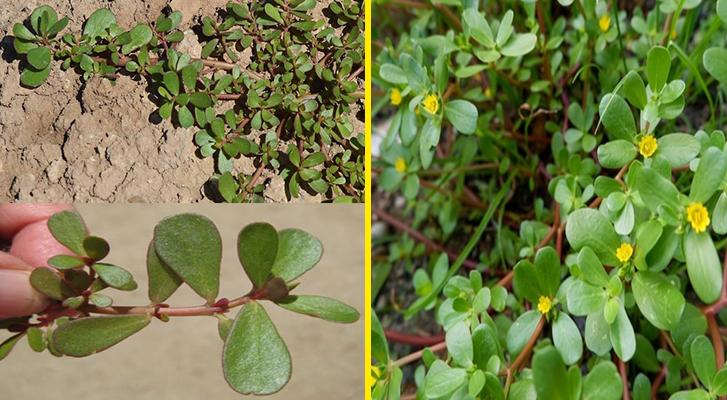Often overlooked and labeled as a common weed, purslane (Portulaca oleracea) is a resilient and nutritious plant that has been consumed for centuries across various cultures. Despite its humble appearance, this herbaceous plant boasts an impressive nutritional profile and a plethora of health benefits, making it a hidden gem in the world of edible greens.
Nutritional Powerhouse:
Purslane is rich in essential nutrients:
Omega-3 Fatty Acids: Surprisingly, it contains high amounts of alpha-linolenic acid (ALA), a type of omega-3 fatty acid beneficial for heart health.
Vitamins and Minerals: Loaded with vitamins A, C, and E, along with minerals like magnesium, calcium, and potassium, contributing to overall well-being.
Antioxidants: Packed with antioxidants such as beta-carotene and various flavonoids, it helps combat oxidative stress and inflammation in the body.
Health Benefits:
Heart Health: The omega-3 fatty acids found in purslane may help reduce the risk of heart disease by supporting healthy cholesterol levels and promoting cardiovascular health.
Anti-Inflammatory Properties: Its rich antioxidant content can aid in reducing inflammation, potentially benefiting conditions like arthritis and other inflammatory disorders.
Digestive Health: Purslane contains soluble fiber, promoting healthy digestion and potentially aiding in reducing constipation.
Boosting Immunity: With its abundance of vitamins and antioxidants, purslane can contribute to a stronger immune system, helping the body fight off infections.
Culinary Uses:
Salads: Its slightly tangy flavor and crunchy texture make purslane a great addition to salads, providing a fresh and nutritious element.
Stir-fries and Soups: Cooked purslane can be added to stir-fries, soups, or stews, offering a unique taste and nutritional boost.
Smoothies: Blending purslane leaves into green smoothies can be an excellent way to incorporate its nutrients into your diet.
Harvesting and Precautions:
Wild Harvesting: Purslane grows abundantly in many regions and can often be found in gardens, fields, or even between sidewalk cracks. Ensure you harvest from areas free of pesticides or contaminants.
Some individuals may be allergic to certain plants, including purslane. It’s advisable to start with a small amount if consuming for the first time.
Purslane, once disregarded as a pesky weed, deserves recognition for its remarkable nutritional content and health benefits. Embracing this humble green as a valuable addition to your diet can be a simple yet effective way to enhance overall health and well-being. Whether enjoyed fresh in salads or cooked in various dishes, incorporating purslane into your meals can turn this unrecognized wonder plant into a nutritional powerhouse on your plate.






Add comment